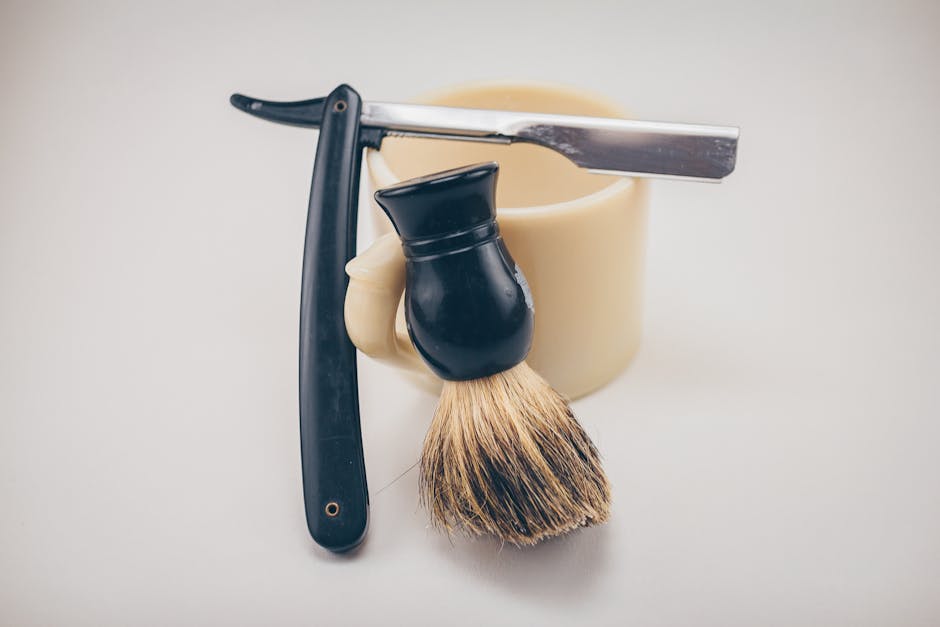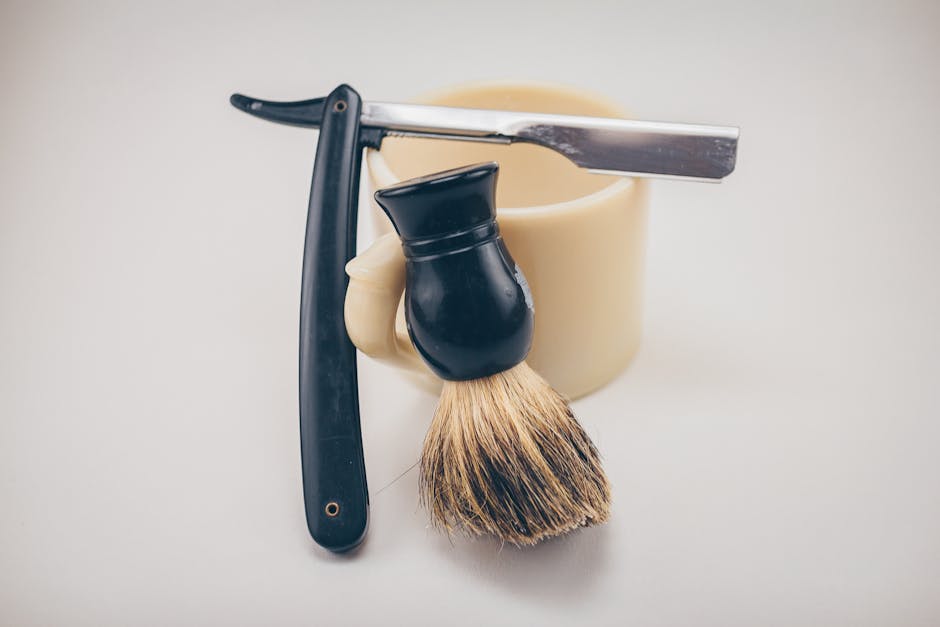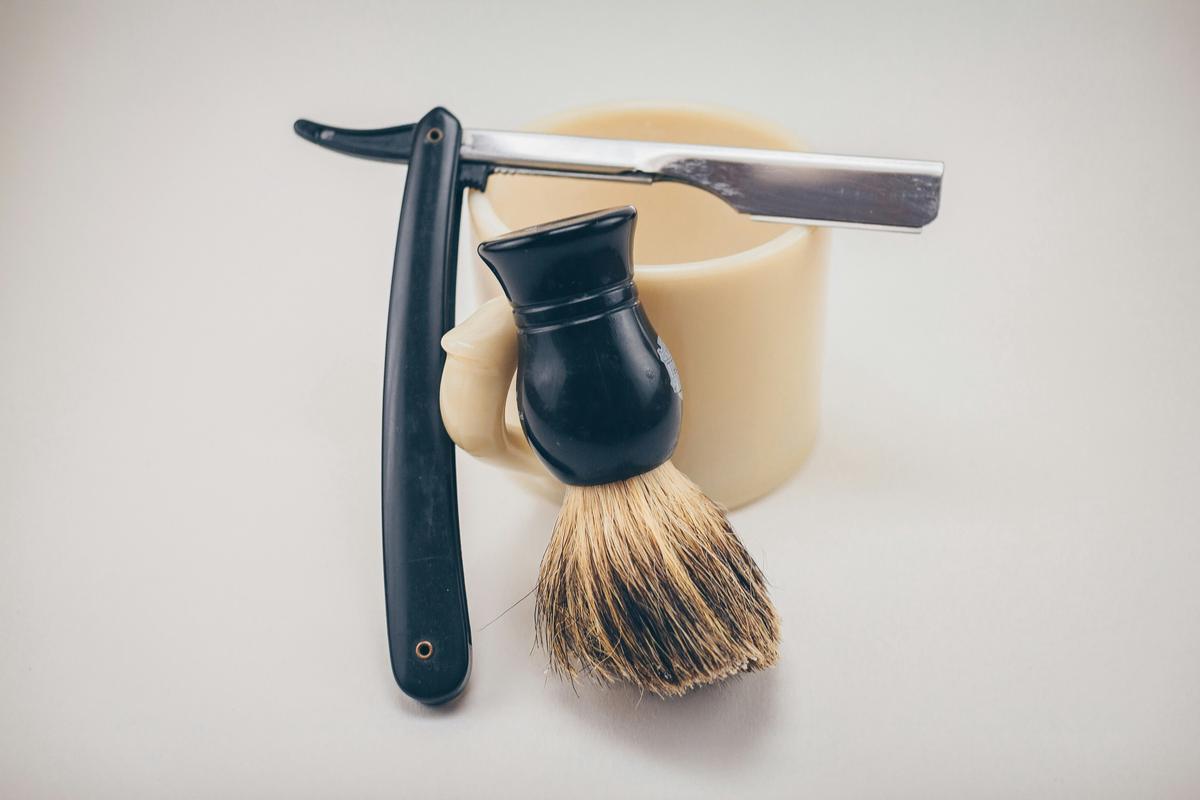Curiosity often begins with a simple question or a fleeting thought, leading us down paths we never anticipated. Imagine the journey of traditional wet shaving, a practice that transforms a daily necessity into a cherished ritual. This narrative invites us on a journey through the nuanced world of traditional wet shaving, highlighting how a spark of curiosity can lead to a profound appreciation for the art of grooming.
The Spark of Curiosity
Curiosity often gets sparked by a simple yet unexpected moment. Picture yourself watching an old film, where the hero, in a dimly lit bathroom filled with steam, takes a straight razor and methodically swipes it down his cheek, revealing smooth, clean skin. This visual, cinematic as it seems, plants a seed – a desire to replicate that smooth shave, that ritual.
Or imagine a casual chat with a friend who mentions he’s ditched the electric buzz for a single blade to embrace the art of traditional shaving. His enthusiasm is palpable, describing the ritual, the technique, and the incredible smoothness afterwards. It’s contagious. You find yourself intrigued, wondering if you too could turn a mundane task into a satisfying experience.
Frustration can also drive curiosity. Endless runs with the newest multi-blade razor, promising the closest shave, yet leaving behind irritation or the dreaded ingrown hairs, can leave one yearning for something better, something different. Hearing about traditional wet shaving feels like unveiling an ancient secret that just might be the solution.
The rabbit hole deepens as you start your research. You stumble upon forums filled with passionate individuals, sharing their routines, their favorite tools, and methods. Terms like “safety razor,” “straight razor,” “brush lathering,” enter your vocabulary. Each thread you read feels like peeling another layer, revealing more of this hidden world you never knew existed.
The beauty of this journey lies not just in the destination but in the transformation of routine into ritual. You learn the importance of preparation, of softening the beard with hot water, of finding the right angle for your razor. This process pushes you to slow down, to pay attention to detail, to savor the moment.
And then comes the first time you assemble your tools – the razor, the brush, the soap. The feeling is almost ceremonial. You’ve watched countless tutorials, read numerous tips, and now it’s your turn. With a mix of excitement and nervousness, you begin. The glide of the brush on your face, lathering the soap, feels therapeutic. The heaviness of the razor in your hand feels reliable as you begin your first cautious stroke.
The result? Perhaps not perfect on the first try. Yet, there’s a sense of achievement. Your skin feels different, smoother, and you realize the shave is closer than any you’ve had before. The ritual becomes something you look forward to, a time to indulge in self-care, a skill you’re eager to refine.
It’s about more than just the shave. It’s about embracing a tradition, mastering a skill, and transforming what was once a chore into a cherished ritual. This realization hits you – curiosity didn’t just lead you to try traditional wet shaving; it introduced you to a new philosophy of care and attention, one that extends far beyond the bathroom mirror.

The Research Rabbit Hole
Diving deeper into the realm of traditional wet shaving unlocks a treasure trove of learning resources beyond the basics. Forums teem with enthusiasts eager to share their wealth of knowledge, discussing everything from the subtleties of blade angles to the art of whipping up the perfect lather. These digital gatherings become both classroom and coffee shop, where novices and veterans alike exchange tips and tales.
Blogs serve as another critical hub for those keen to navigate the waters of wet shaving. Here, you’ll find passionate writers chronicling their experiences, reviewing tools and products, and often shedding light on the history that underpins the practice. Through these personal narratives, one gets a vivid picture of the journey, recognizing that every nick and irritation is a step toward mastery.
YouTube has emerged as a vital visual guide for learning traditional shaving techniques. Tutors in these videos take you through each step, from pre-shave preparations to post-shave care. Watching these can feel like having a mentor right in your bathroom, guiding your hand. These tutorials demystify the process, making it less intimidating for newcomers and offering new insights for the seasoned.
Historical texts on the subject add a rich layer of context, uncovering the evolution of shaving through ages. From Roman soldiers scraping their faces with pumice stones to the elaborate grooming regimes of the 18th-century aristocracy, these studies connect the reader with a lineage of men for whom shaving was more than a daily chore; it was an art and sometimes a statement.
The pursuit of knowledge in traditional wet shaving often compels enthusiasts to create content themselves. Documenting one’s journey, sharing discoveries along the way, and adding personal anecdotes help in shaping the community’s collective knowledge. Over time, contributors find their insights inspiring the next wave of curious learners.
Manufacturers and craftsmen specializing in shaving supplies offer a wealth of information through their platforms. Detailed product descriptions, background stories on materials and design choices, and tutorials on how to use their offerings enrich the learning experience. These insights directly from the makers can spark appreciation for the craftsmanship behind a well-made razor or brush.
Local shaving clubs or meetups provide a tangible experience where enthusiasts can learn from each other in real-time. Handling different tools, discussing techniques face-to-face, and sharing personal recommendations bring an invaluable dimension to the learning journey. These gatherings celebrate the communal aspect of traditional shaving, making it a shared passion rather than a solitary endeavor.
Finally, experimenting with various tools and techniques is perhaps the most crucial phase of research. Personal experience rounds out theoretical knowledge, with each shave acting as a practical lesson. What works splendidly for one may prove disastrous for another, underlining the importance of patience and persistence in honing one’s skill.
At its heart, the research phase is about channeling curiosity into action. It transforms traditional shaving from a mundane task into a deliberate practice marked by mindfulness and continuous improvement. This journey of exploration not only revives a bygone art but also fosters a deeper connection with a daily ritual that many had written off as obsolete.

Trial, Error, and Mastery
Experimenting with various blades becomes akin to a bespoke quest, honing intuition about what works for skin types and beard textures. The first swipe with a single-blade safety razor unveils nuances in pressure and angle previously overshadowed by the forgiveness of multi-blades. Each cut, nick, or seamless pass adds to the personal archive of “dos and don’ts,” melding respect for the blade’s simplicity with its unforgiving precision.
Choosing the perfect shaving soap or cream transforms into an exploration of scents, textures, and efficacy. Formulating the ideal lather evolves from mystifying alchemy to a rewarding skill, reflecting the importance of moisture, tool quality, and personal technique. The transition from a synthetic brush to one made of badger or boar hair doesn’t just change the feel on the skin; it’s an immersion into how tools of different qualities influence the shaving experience.
Adjusting water temperature and experimenting with pre-shave oils add layers to the shaving ritual, stitching together a tapestry of tactile and olfactory senses that elevate the routine. This sensory enhancement encourages a more mindful approach, awakening an appreciation for the moment’s simplicity amidst a busy life.
Engagement with the community, from novices to veterans, enriches this journey. Shared triumphs and trials weave a collective narrative that bridges ages and geographies, proving that traditional wet shaving isn’t a relic of the past but a living, thriving practice. This camaraderie bolsters the nerve to try new techniques or recommend modifications based on one’s adventures with different razors, blades, or lathering techniques.
This hands-on approach otherwise lost in modern, fast-paced grooming methods cultivates patience. Each mishap becomes a learning moment, each smooth shave a victorious milestone. It teaches the value of slowing down, not just in front of the mirror but in other aspects of life as well.
Ultimately, this dive into traditional wet shaving tools and techniques fosters not only an aesthetic appreciation but a profound respect for self-care rites. It isn’t merely about removing stubble—it’s an embrace of heritage, craftsmanship, and personal growth. Through this lens, every morning ritual becomes a passage to past wisdom and a daily grounding moment in the present.

Photo by malvestida on Unsplash
Community and Sharing Knowledge
Navigating through early morning routines, one can find a comforting solidarity in the shared pursuit of a perfect shave among the traditional wet shaving community. This unity transcends geographical limits, fostering global connections. The thrill of cracking open a new artisanal soap transports enthusiasts into an olfactory paradise, sparking discussions that bridge continents. Members exchange notes on the subtle nuances of fragrance, from the earthy tones of sandalwood to the invigorating zest of citrus, delving into how these scents influence the shaving experience.
Transitioning from the sensory exploration of soaps, the topic often shifts to the craft of razor restoration. Enthusiasts share before-and-after photos of their latest projects, igniting conversations about preservation techniques that breathe new life into vintage gear. This exchange not only serves as a testament to their skill but also acts as a beacon for newcomers intrigued by the sustainability aspect of traditional wet shaving.
The exchange of knowledge extends to troubleshooting common shaving woes. Seasoned veterans offer sage advice on tackling issues like razor burn or ingrown hairs, emphasizing the importance of skin preparation and aftercare. These interactions often lead to personalized recommendations, from witch hazel tonics to alum blocks, guiding members toward solutions tailored to their unique skin types.
Community-driven product swaps add another layer to this tapestry, bridging trust and camaraderie among members. By exchanging products that didn’t suit one’s preferences, members not only declutter their cabinets but also enrich another’s shaving arsenal. This practice symbolizes the community’s underlying ethos: a collective journey towards refining one’s grooming ritual, underpinned by a spirit of generosity.
As members document their shaving journeys through social media, they inadvertently become influencers within and beyond the community. Instagram feeds and Twitter threads adorned with sleek razors and luscious lather inspire observers to partake in this refined ritual. Through engaging captions and hashtag movements, they pull back the curtain on this intimate act, inviting others to reconsider their morning routines.
Lastly, the pursuit of mastering traditional wet shaving often culminates in face-to-face gatherings. Be it impromptu discussions in barbershops or organized meetups, these interactions solidify the bonds formed online. Flickering gazes over shared shaving kits metamorphose into lively exchanges on personal growth and resourceful living. Each meetup embodies the essence of the community: a shared curiosity, transformed into lifelong friendships and an ever-deepening knowledge pool.

Photo by timmossholder on Unsplash
The Evolution of Personal Grooming
Diving deeper into the unique realms of traditional wet shaving impacts an individual’s global viewpoint on self-care, shifting from a chore to a cherished passion. It instills a nuanced understanding of personal aesthetics and hygiene, transcending beyond just a shave towards a holistic approach to grooming. As curiosity unfolds into a more profound appreciation, one discovers the intricate balance between physical appearance and inner well-being. This revelation encourages a more mindful lifestyle, where self-care rituals become avenues for relaxation and self-expression.
This curiosity-driven journey elevates the standards by which products are chosen, leaning towards quality over quantity. The appreciation for artisanal shaving soaps and creams, made with natural ingredients, reflects a broader preference for organic, eco-friendly products in other aspects of personal care. The meticulous process of selecting these products echoes the growing trend towards conscientious consumerism, where the impact of our choices on health and environment comes under scrutiny.
Furthermore, engaging with the community and learning the fine art of wet shaving demystifies the process of building a tailored grooming regimen. This personalized approach emphasizes the necessity of understanding one’s skin type, hair texture, and personal preferences. The knowledge gained from traditional wet shaving forums and tutorials encourage individuals to experiment with various grooming products and tools outside shaving, from moisturizers tailored to specific skin needs to hair styling products that complement their persona.
The preference for tools like the single-blade safety razor over disposable alternatives further indicates a shift towards sustainable living. This choice, driven by both quality of shave and environmental considerations, mirrors a broader commitment to reducing waste, echoing in choices like reusable water bottles and cloth shopping bags. Wet shaving becomes a gateway to a lifestyle where every action and purchase is made with intentionality and awareness of its broader impact.
On a personal level, this deep dive into traditional wet shaving and, by extension, into comprehensive self-care and grooming habits fosters a sense of pride and confidence. The ritualistic nature of wet shaving offers a moment of introspection and tranquility in an otherwise busy life, serving as a daily reminder to care for oneself. This dedicated time becomes a non-negotiable part of one’s routine, reinforcing the idea that self-care is not selfish but essential for personal satisfaction and well-being.
Curiosity in traditional wet shaving, thus, plants the seed for a broader exploration of grooming and self-care, transforming mundane tasks into cherished rituals. It invites a thoughtful look into our lifestyles, encouraging choices that promote satisfaction, wellness, and harmony. Through this lens, grooming transcends its traditional confines, evolving into an expressive and fulfilling part of the modern individual’s life ethos.

Photo by joshsorenson on Unsplash
In conclusion, the essence of traditional wet shaving transcends the act itself, embedding into our routines a philosophy of care, attention, and personal satisfaction. It reminds us that in the quiet moments of our morning rituals lie opportunities for mindfulness and self-expression. This journey, fueled by curiosity, not only revives an age-old practice but also enriches our daily lives with a sense of pride and well-being.
Experience the power of AI content creation with Writio! This article was crafted by Writio.
Leave a Reply